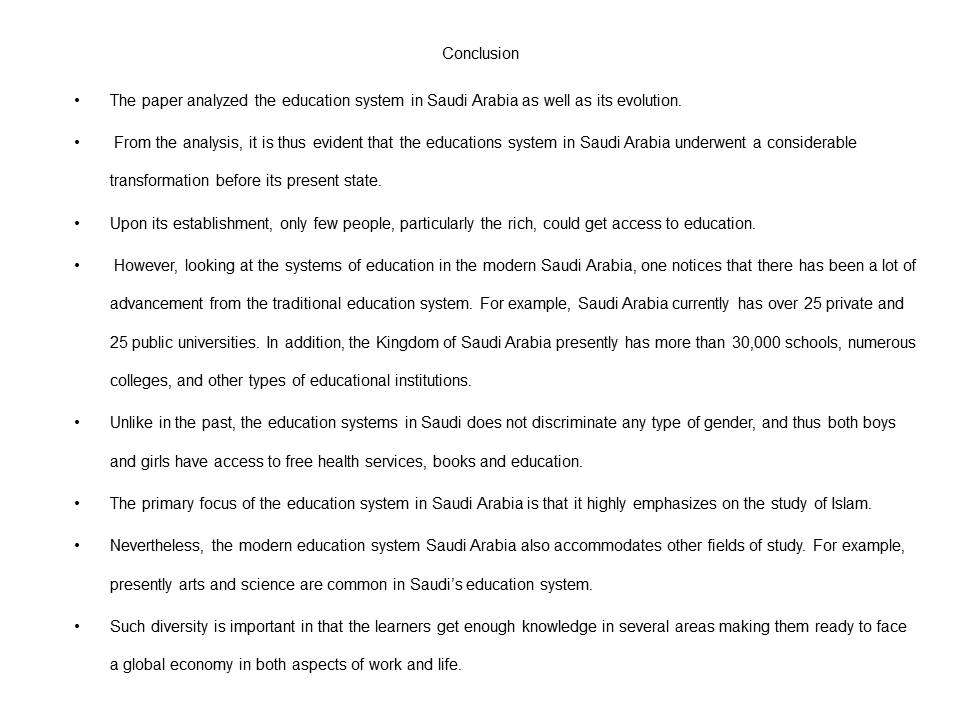Background of Saudi Arabia
The history of the establishment of the Kingdom of Saudi Arabia dates back in 1932. This kingdom stands in an area that covers around more than half of the Arabian Peninsula.
The Kingdom of Saudi Arabia neighbors the Red Sea on the western, Jordan on the northern side, while on the eastern side it neighbors the UAE, the Arabian Gulf, as well as the Oman. In addition, Yemen is on the southern part of this kingdom. South Arabia has a strong base for Islamic teaching as well as Islamic religion. As such, Shariah is used as a framework for law and constitution.
Most of the industrial development, as well as urbanization started because of oil presence in Saudi Arabia. For this reason, many people moved to the urban areas following the growth of the kingdom and the expansion of market for various products.
With such influx of people, education became a necessity, considering that there was the need for people to communicate with one another, as well as to know new things.
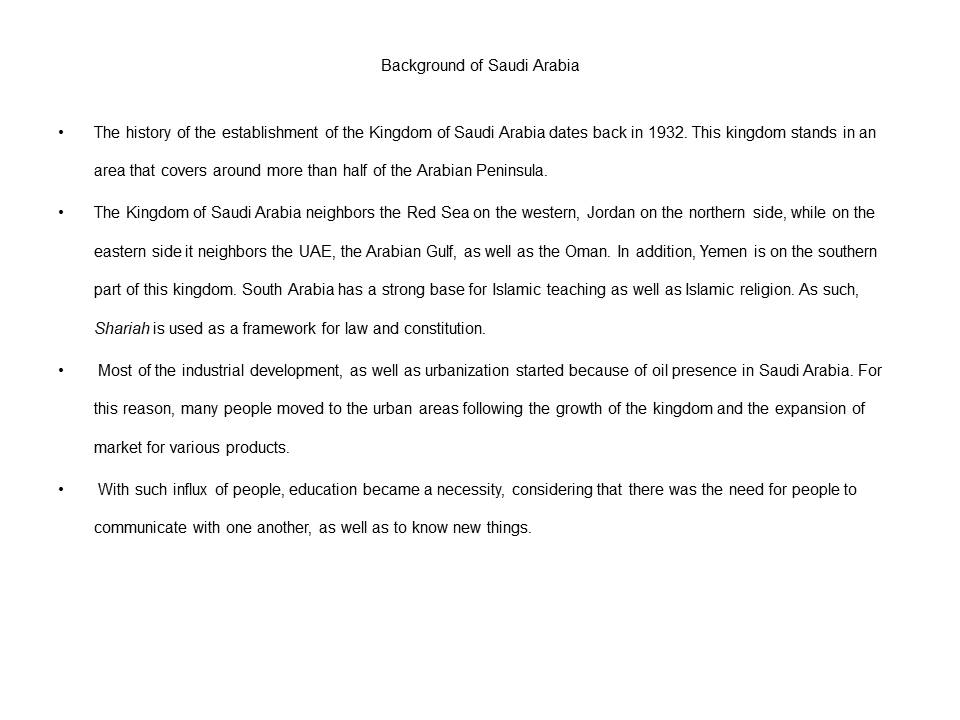
Educational Overview in the Past
Education, as such has become a necessity in most parts of the Kingdom of Saudi Arabia. However, the traditional education system in the Kingdom of Saudi Arabia was sexually based, whereby the girls did not get equal standards of education as the boys . In addition, the system of education in Saudi Arabia is administered in form of tree different categories.
These categories included:
- Traditional Islamic education.
- Education for the girls.
- General education for the boys.
The traditional Islamic education is offered mostly to the boys in the region.
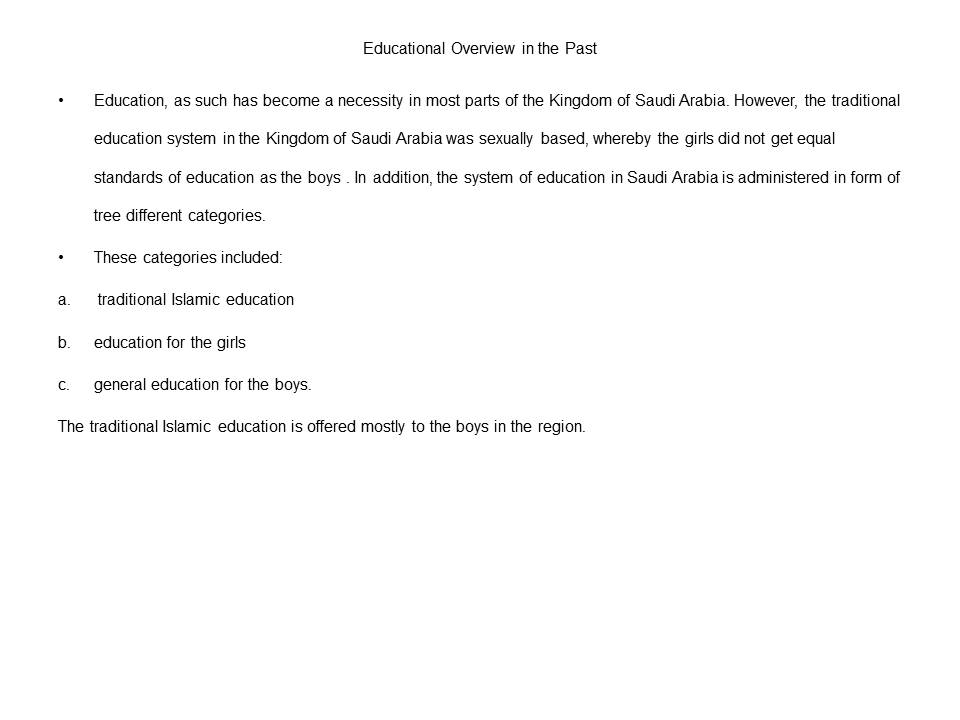
Establishment of Education Systems
Education in the Kingdom of Saudi Arabia started evolving since 1952, following the establishment of the Ministry of Education to oversee the provision of education all over Saudi Arabia.
This ministry was tasked with the responsibilities of general boys’ education. However, the General Presidency for Girls’ Education is tasked with the duty of providing education to the girl child.
Nevertheless, despite the difference in the bodies managing education for the girls and boys, the curriculum used is the same, as well as the annual examinations administered.
The Islamic education, on the other hand, is meant only for young boys with the intent of gaining knowledge in Islamic religion. After they are trained, these boys join the Ulema, a religious clergy.
During the introduction of education in Saudi Arabia, the kingdom was facing many challenges in setting up their educational base. This was attributable to the fact that it was a new country, which had not stabilized in its economic and social systems.
For this reason, Saudi Arabia relied on other countries for it to adapt an educational system that was suitable for its population.
The country borrowed the education systems of Lebanon, Egypt, and Syria. For example, the Directorate of Education that was established in 1925 was affiliated to education systems of Egypt and Syria. When Saleh Shattan resigned, Mohammad Al-Gussab, a Syrian was appointed to manage the education system of Saudi Arabia.
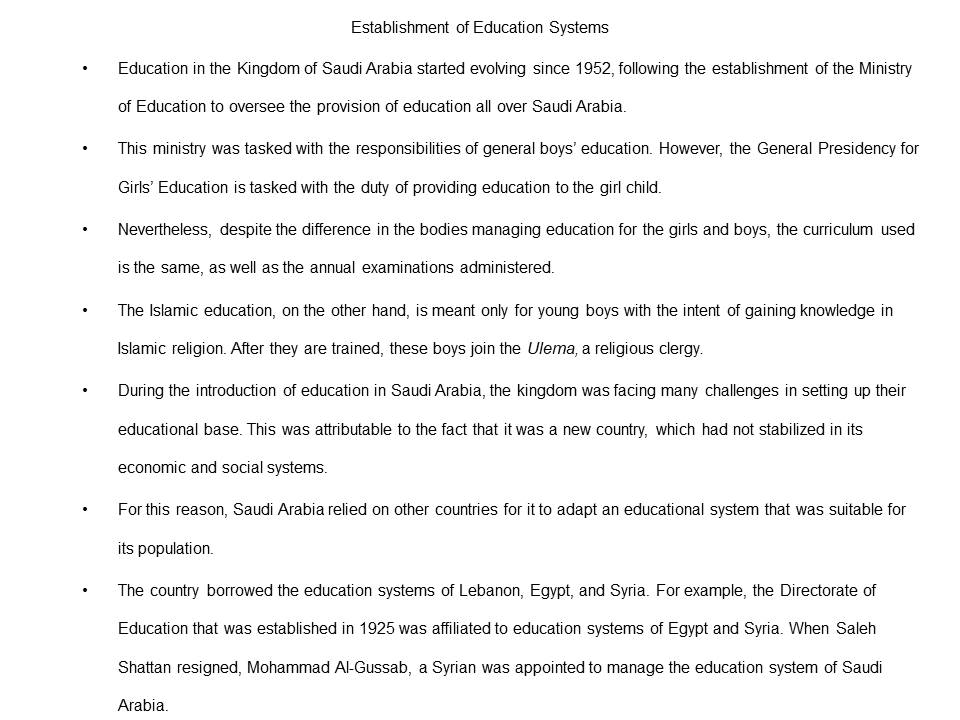
Challenge of the Systems
At the initial stages of setting up an education system in Saudi Arabia, it was challenging to get trained teachers. For example, the teachers available from several Arabic countries had high school education.
Research establishes that most of the teachers, during this period were only secondary school graduates. In addition, Saudi got most of the assistance in terms of trained teachers from Egypt.
However, the Kingdom of Saudi Arabia had to follow a certain protocol if it needed teachers.
Saudi could get assistance by:
- Engaging the Ministry of Education in Egypt directly.
- Saudi could use the institution of Al-Azhar, through its General Directorate.
- Through personal contracts.
The demand to have teachers with the necessary qualifications grew high, until 1928, when the Directorate of Education, managed to start an institution to train teachers. This institution focused on religious issues. In addition, during the development of the initial education system, the country did not have a curriculum plan. In fact, the education curriculum in Saudi was reviewed severally. For example, the curriculum had been reviewed in 1935 and 1932, aimed at including Arabic language and Islam studies. In addition, the plan of the curriculum also focused on the addition of studies that were related to moral and health sciences.
In the curriculum for the religious education, although general academic excellence is core, the primary focus is given to the Arabic and Islamic knowledge.
The period following the end of World War II, led to the emergence of schools that had secular western characteristics from the midst of the traditionally provided education system in Saudi Arabia.
Nevertheless, the present curriculum focuses largely on religious studies, which particularly emphasizes on the Quran memorization, understanding, as well as its interpretation.
In addition, a lot of emphasis is given on the daily application of teachings, as well as on several lessons from the Islamic tradition.
Apart from the religious schools, universities in the Kingdom of Saudi Arabia offer religious teachings to ensure that the learners get the best out of their religion.
It is compulsory for any student to take religious studies in both secondary and university level. Such a strategy ensures that the learner has gained all the necessary Islamic teaching.
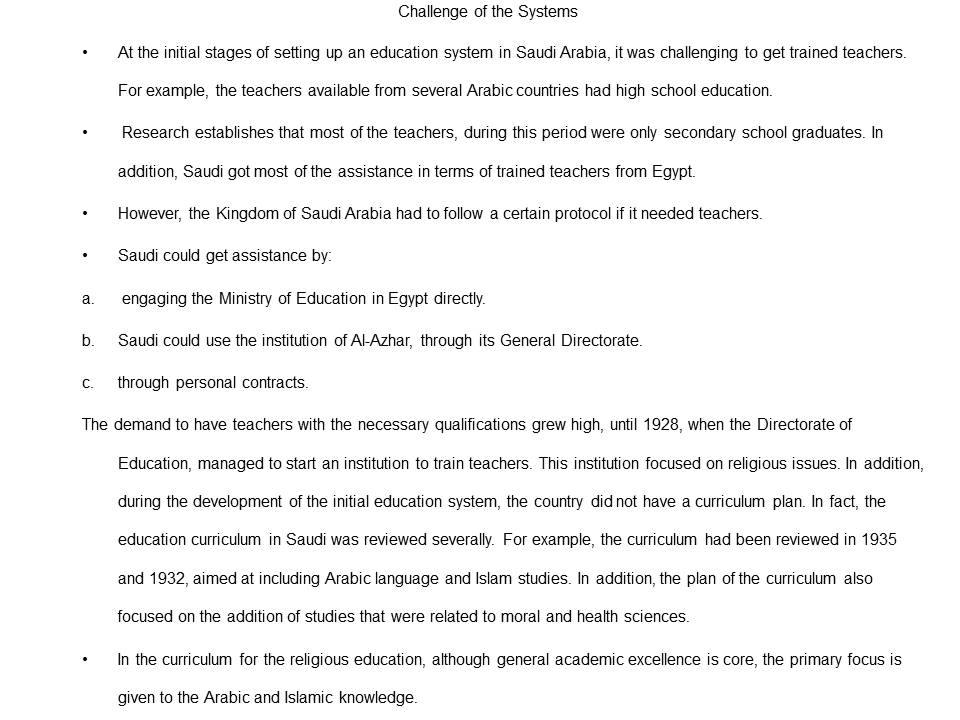
Conclusion
The paper analyzed the education system in Saudi Arabia as well as its evolution.
From the analysis, it is thus evident that the educations system in Saudi Arabia underwent a considerable transformation before its present state.
Upon its establishment, only few people, particularly the rich, could get access to education.
However, looking at the systems of education in the modern Saudi Arabia, one notices that there has been a lot of advancement from the traditional education system. For example, Saudi Arabia currently has over 25 private and 25 public universities. In addition, the Kingdom of Saudi Arabia presently has more than 30,000 schools, numerous colleges, and other types of educational institutions.
Unlike in the past, the education systems in Saudi does not discriminate any type of gender, and thus both boys and girls have access to free health services, books and education.
The primary focus of the education system in Saudi Arabia is that it highly emphasizes on the study of Islam.
Nevertheless, the modern education system Saudi Arabia also accommodates other fields of study. For example, presently arts and science are common in Saudi’s education system.
Such diversity is important in that the learners get enough knowledge in several areas making them ready to face a global economy in both aspects of work and life.
